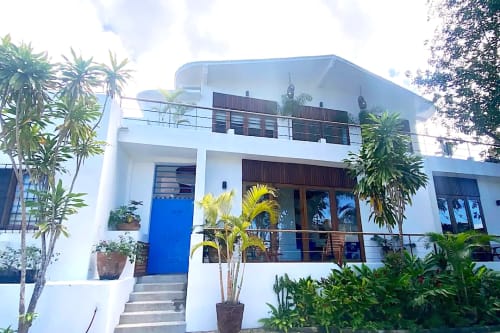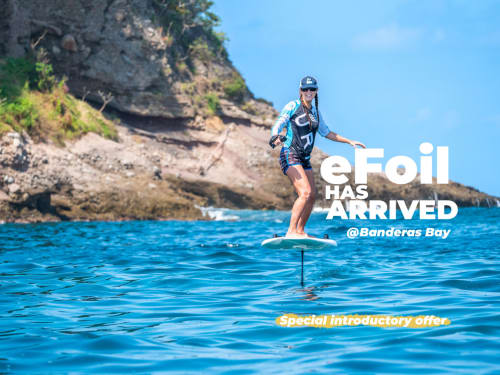The humpback whales that visit Sayulita each year, for many, are part of the true magic of the area. Each winter, usually in mid-November, the large and charismatic North Pacific humpback whales are spotted swimming down the Sayulita coast, announcing their presence by their signature blows or breaching as they travel, and assembling in large numbers to breed and calve. By the end of December to around the start of February, the number of whales that you may encounter on a boat trip from Sayulita can be astounding. However, in the latest U.S. Government’s NOAA global review of the species’ status in 2016, the population of Mexican humpback whales was classified as “threatened”, and for those that swim through Nayarit waters and continue on down to Central America were labeled as “endangered”.
Today, the two major modern threats to large whales and their recovery are vessel strikes (a forceful impact between a whale and any type of watercraft, and entanglement (when a whale becomes wrapped in any type of fishing gear). Unfortunately, humpback whales are one of the most commonly hit species worldwide, and seem particularly vulnerable to vessel strikes. In the IWC Ship Strike Database (2010) they found evidence of over 100 vessel strikes with humpback whales worldwide; it is the second most reportedly hit species. In Nayarit, we know that vessel strikes are occurring. Many of the humpback whales that annually return to the region have diagnostic scars that have been left by collisions with vessels, and dead whales have been found with major injuries that can only have been caused by a boat’s propeller. Unfortunately, these incidents are probably just a symptom of a much greater problem. The threat of vessel strikes with large whales is famously very hard to assess. With most collisions with large ships going unnoticed, most dead whales are never found, and most collisions are not being reported due to fear of reprisal. Therefore, the little evidence that we have that vessel strikes are occurring is just proof that the threat is real and present, and is not a measure of the scale of the problem.
Unfortunately, the problem of vessel strikes to the Nayarit humpback whales will likely only be compounded in the future. In the last five years, both the local and national government have announced plans for major port expansions in the area. The Nayarit coast was previously one of the few regions of Pacific Mexico that did not receive heavy shipping / vessel traffic. Some of the heaviest used shipping lanes in the world lead down the North American continent to the Panama Canal, skipping the Nayarit area due to its geographic location sheltered by the Baja California Peninsula.
In 2014, a significant expansion of the port of Mazatlán (in Nayarit’s neighbouring state of Sinaloa) was announced as part of the Mexican Government’s, “National Infrastructure Plan (NIP) 2014 – 2018”, which could bring major shipping traffic through Nayarit. A few months later, the local government announced plans to build a major new port, “Puerto Nayarit” (with investment of $2 billion USD from Chinese private sector companies), in the middle of Nayarit’s coastline, and proposed to be the deepest port entrance in Latin America. Local concern was immediate for the humpback whale population, and there has been great relief that the Puerto Nayarit project has now stalled due to political upset; it has not been mentioned in local government transport plans since 2016. However, a strengthened resolve to increase tourism via the development of Riviera Nayarit by the Mexican government as the newest tourism destination of Mexico is already increasing vessel traffic in the state. Sayulita locals are most certainly aware of several articles that have been written in the last few weeks claiming Riviera Nayarit as the new “Big” or “It” destination of Mexico, and the new “Gold Mine” of Mexican tourism, with five major new resorts announced to be built in the region. Increased tourism, traffic, mega-yachts, and jet-skis may soon be common in the quiet sheltered bays that humpback whales presently use for resting and nursing.
So, what can we do to help protect the whales of Nayarit? First, we need to identify where we find the highest densities of humpback whales, particularly mother and calf pods, to allow for effective management and mitigation. My PhD project “The spatial ecology of humpback whales and threat of vessel collision in Nayarit, Mexico” is a four-year project where we are for the first time intensively studying the whales of the region. Previously, most research has been limited to the Bay of Banderas, and mostly using tourism boats as platforms for research. In this study, however, we are intensively investigating humpback whale distribution, densities and habitat use along the entire coast of Nayarit, and in fact all the way up past Mazatlán, conducting both aerial surveys and vessel surveys to learn more about the whales of Nayarit.
Using information collected from this fieldwork, we will then use predictive species modelling and AIS shipping data and future projected vessel traffic, to identify high risk vessel strike areas. With the loss of investors and political backing of “Puerto Nayarit”, there is the new opportunity to protect the critical humpback whale breeding and calving habitat in Nayarit from shipping traffic. The end aim of the project will be to provide the data that will form the basis of the proposal of the “Nayarit Whale Sanctuary.” We hope our results will show the great importance of Nayarit as a center of breeding activity in mainland Mexico, and that by identifying areas of high humpback whale densities and critical habitat we can design the location of a sanctuary to aid in the protection of the species in Nayarit, and Sayulita will be at the center of it.
We hope that the IMO and Mexican government will now seize upon this opportunity to recognize part of Nayarit as a whale sanctuary by making it an exclusion zone for heavy maritime traffic, a protected area from whale watching activities within 2km from the coast throughout Nayarit, and with a ban of all jet-skis in the area. The exclusion of heavy maritime traffic would not only reduce the impact of vessel strikes to the population, but it would also reduce the amount of anthropogenic noise in the region, which is thought to negatively impact many cetacean species and mask their sounds, affecting efficient communication
This work is sponsored by Cetacean Society International, and is a project of the Aquatic Megafauna Research Unit of Murdoch University, Australia, and UNAM, Mexico. Funding for this project also comes from the Sayulita whale watching company “La Orca de Sayulita” where all profits are presently supporting this work, and where data is collected on each trip to be used as part of the investigation. For more information please contact Nico Ransome.
Written by: Nico Ransome (La Orca de Sayulita)




